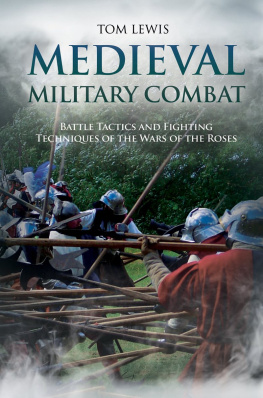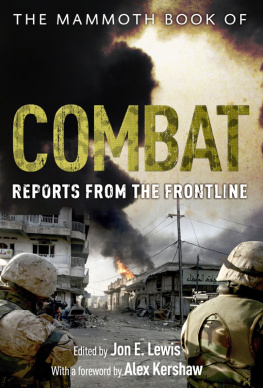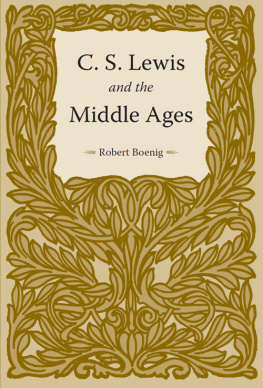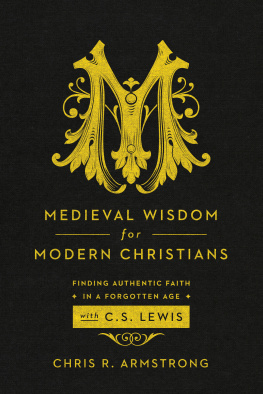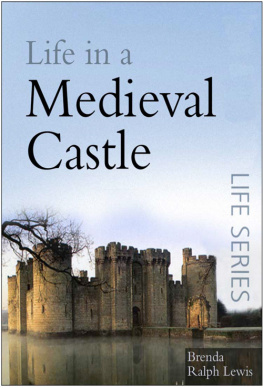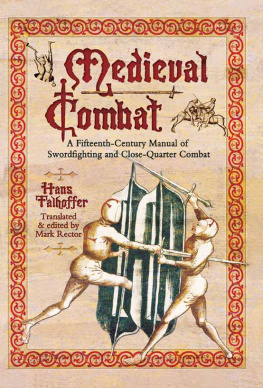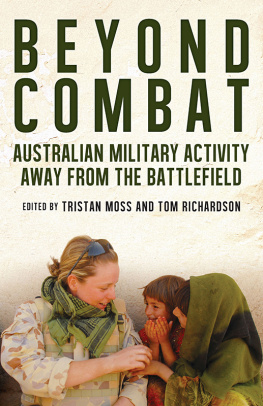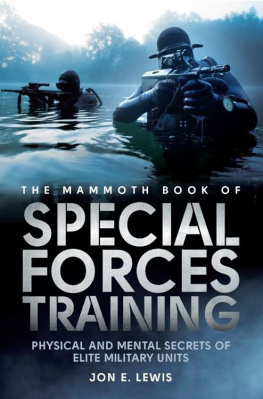Dr Tom Lewis OAM - Medieval Military Combat
Here you can read online Dr Tom Lewis OAM - Medieval Military Combat full text of the book (entire story) in english for free. Download pdf and epub, get meaning, cover and reviews about this ebook. year: 2021, publisher: Casemate Publishers, genre: History. Description of the work, (preface) as well as reviews are available. Best literature library LitArk.com created for fans of good reading and offers a wide selection of genres:
Romance novel
Science fiction
Adventure
Detective
Science
History
Home and family
Prose
Art
Politics
Computer
Non-fiction
Religion
Business
Children
Humor
Choose a favorite category and find really read worthwhile books. Enjoy immersion in the world of imagination, feel the emotions of the characters or learn something new for yourself, make an fascinating discovery.
- Book:Medieval Military Combat
- Author:
- Publisher:Casemate Publishers
- Genre:
- Year:2021
- Rating:3 / 5
- Favourites:Add to favourites
- Your mark:
- 60
- 1
- 2
- 3
- 4
- 5
Medieval Military Combat: summary, description and annotation
We offer to read an annotation, description, summary or preface (depends on what the author of the book "Medieval Military Combat" wrote himself). If you haven't found the necessary information about the book — write in the comments, we will try to find it.
Medieval Military Combat — read online for free the complete book (whole text) full work
Below is the text of the book, divided by pages. System saving the place of the last page read, allows you to conveniently read the book "Medieval Military Combat" online for free, without having to search again every time where you left off. Put a bookmark, and you can go to the page where you finished reading at any time.
Font size:
Interval:
Bookmark:

MEDIEVAL MILITARY COMBAT
Battle Tactics and Fighting Techniques of the Wars of the Roses
TOM LEWIS

Published in Great Britain and the United States of America in 2021 by
CASEMATE PUBLISHERS
The Old Music Hall, 106108 Cowley Road, Oxford OX4 1JE, UK
and
1950 Lawrence Road, Havertown, PA 19083, USA
Copyright 2021 Tom Lewis
Hardcover Edition: ISBN 978-1-61200-887-5
Digital Edition: ISBN 978-1-61200-888-2
Kindle Edition: ISBN 978-1-61200-888-2
A CIP record for this book is available from the British Library
All rights reserved. No part of this book may be reproduced or transmitted in any form or by any means, electronic or mechanical including photocopying, recording or by any information storage and retrieval system, without permission from the publisher in writing.
For a complete list of Casemate titles, please contact:
CASEMATE PUBLISHERS (UK)
Telephone (01865) 241249
Email:
www.casematepublishers.co.uk
CASEMATE PUBLISHERS (US)
Telephone (610) 853-9131
Fax (610) 853-9146
Email:
www.casematepublishers.com
Front cover image: A re-enactment at the Tewkesbury Medieval Festival. (Antony Stanley/Wikimedia Commons)
To Keith and Vicki
My thanks to Dr Peter Williams for his perceptive comments and fearless advice. I owe much to Peters encyclopaedic knowledge of battlefields and military history.
Thanks to Chris Allen for his critique in the early stages.
Ric Fallus forensic eye was most welcome indeed, as were his thoughts on wood techniques in weapons.
Much appreciation to Dr Lloyd Browne, and his comments reflecting the enormous breadth of his reading.
Clinton Bocks honest views were most appreciated.
As always, Ron Lewiss and Kaylene Andersons comments have been gratefully received.
Sections of this work, discussing modern battlefield behaviour, have appeared in the same authors Lethality in Combat . Thanks to Big Sky Publishing for their assent in reproducing them.
Over the past 500 years, there has been a steady measure of analysis of the battles of the Wars of the Roses, in 15th-century Britain. A growth in films and television shows depicting medieval-style battle, including the hugely popular Game of Thrones , has brought a new understanding of armour and ancient weapons although often a flawed one into the lounges of the world.
There has been some sterling work done in analysing the many battles fought between the two great houses of the time: York and Lancaster. Thanks to the work of such scholars as Andrew Boardman and Robert Hardy, something is known of where and when battles were fought, to a reasonable degree how they were supplied, and the end results. Archaeologists such as Tim Sutherland, Anne Curry and Glenn Foard have revealed the reality of battlefield burial, but also opened up mysteries, for numbers of dead seem to be missing.
Hardys works especially have opened up the field of the longbow, a weapon that, given the right timing and circumstances, proved a most significant factor on the battlefield not just in Britain but when the British forayed into Europe for 300 years. Due to the significant achievements of historians such as Tobias Capwell, it is known how the soldier of the day was armoured against injury, and therefore to some extent how well he could survive as a fighting man on the battlefield.
What is not known is exactly how these battles were fought at a unit and personal level. The basic tactics and dispositions are understood: there were almost always three groups known as battles which formed a great line; each of the three was commanded by as capable a captain as was available, with the most prominent, often a King of England, in the centre.
Longbowmen were almost always present. Armoured men-at-arms rode to the fight, but then dismounted and their horses were led to the rear. This was because otherwise the bowmen would shoot the horses down. That is not to say that cavalry were never used, as a sudden surprise shock force to overwhelm foot soldiers before they could react, or being especially useful chasing down the losing side as they fled.
With the plated men to a good degree impervious to arrow fire, the two lines would close. Then they would fight, hand-to-hand, using edged, penetrating and percussive weapons: hammerheads and sharp blades, together with points designed to pierce. Maces, mauls, poleaxes, spears and bills were all backed up by swords and daggers. However, the procedure for carrying out that fighting is not fully understood; it is here that modern authors have glossed over the detail.
It might be that the soldiers fought in a single line. It could also be that they were just two struggling masses, with the best fighters seeking to be the most forward. But this work argues as a hypothesis that the most logical and likely arrangement was two or three lines, with men replacing those in the front line as those soldiers became tired. It will be explored in this work whether the front line stepped back, and how were they commanded to do so. It will also be analysed how the second line went forward to take their place without confusion or the enemy taking advantage. In the press of battle, an apparently minor withdrawal, followed by confusion, could hearten the enemy to seize the moment.
The most damaging and significant weapon of choice for the plated man-at-arms appears to have been the poleaxe. The reasons this weapon appeared on the battlefield will be analysed: was it so superior to the sword or the hand-axe? The use of the mace will be explored too, and that of the bill a sort of blade on the end of a spear.
The use of the poleaxe seems to have been little studied. But it featured largely, as archaeological and pictorial evidence suggests, with its bladed edge able to be alternated with the percussive hammer on the other side. The spike at the end of the poleaxe indicates it was not only used in an overhand swing, but also as a jabbing and thrusting weapon. The amount of space a soldier needed on either side to avoid hitting his neighbours with his swings will be examined. Exactly how he decided presumably in a flash during the fight to rotate its shaft in his hands and use the hammer rather than the axe will also be explored.
The effectiveness of the poleaxe is not fully understood. If two equally skilled soldiers, similarly protected with good plate, took on each other, how long would they have to fight before one gained the upper hand? And presumably the men did not fight in single combat would three band together, perhaps to take on another group?
Another staff weapon that is, a pole with a blade was also present. This was the bill, a development of the agricultural method of pulling fruit from trees. The bill had an edge and a hook, and was useful for stabbing and to a limited extent cutting. Its length meant it was less useful in a sweeping cut, but more practical against people whom a soldier wanted to pull over; it was thus of some use against horsemen to haul them out of the saddle. Soldiers also used spears of a sort; not the lances with which horsed soldiers were armed, but a smaller, simpler spear with a wooden shaft and a metal head.
What of men with swords? Logical analysis and re-enactment two of the processes used in this book to achieve its findings suggest that swordsmen were a much lesser factor against blades and points. But the man armed with an edged weapon still had a significant weapon in his hand. How it was used in a melee the general confused hacking and stabbing that battles usually became will be examined.
Font size:
Interval:
Bookmark:
Similar books «Medieval Military Combat»
Look at similar books to Medieval Military Combat. We have selected literature similar in name and meaning in the hope of providing readers with more options to find new, interesting, not yet read works.
Discussion, reviews of the book Medieval Military Combat and just readers' own opinions. Leave your comments, write what you think about the work, its meaning or the main characters. Specify what exactly you liked and what you didn't like, and why you think so.

